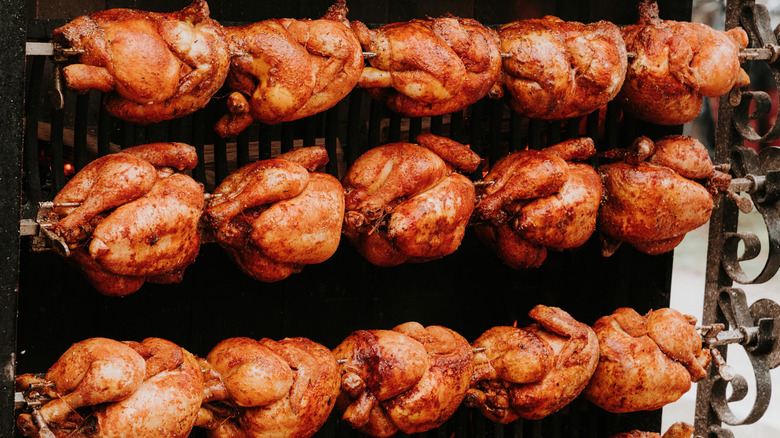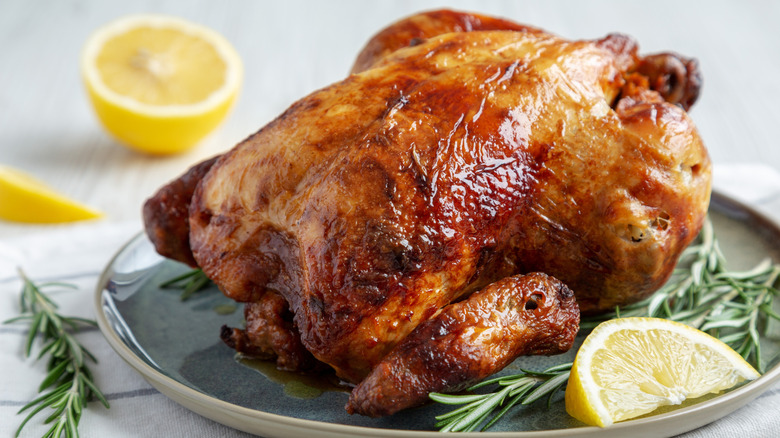Don't Buy That Rotisserie Chicken If You Notice This Color Change
While rotisserie chickens are delicious, cheap ways to get protein into your diet, they have their drawbacks. Rotisserie chicken is so cheap often because the store selling them had raw, whole chickens that were about to reach their expiration dates. While cooking them extends their longevity, you should keep a careful eye out for signs that they're about to go bad.
Color is one of the easiest, most obvious indicators of a rotisserie chicken's freshness. If its flesh or skin develops a gray or greenish hue, stay away! This is a clear sign that it's past the point of edibility, so even if it doesn't make you sick, it will definitely have an unappetizing taste, smell, or texture. Even just small splotches of discoloration are red flags for any rotisserie chicken, as they may indicate the meat is starting to expire or perhaps that mold has started to encroach on the food.
A rotisserie chicken will last in your fridge for about four days, provided you follow USDA guidelines to reheat it to 165 degrees Fahrenheit. Still, certain sensory indicators can tell you that there's no salvaging a chicken and to steer clear from purchasing it. While color is the most obvious one, especially when it's in packaging, there are other changes to keep an eye out for once you've brought a rotisserie chicken home.
Other signs a rotisserie chicken isn't the freshest
While you shouldn't poke or lick poultry you haven't already purchased, touch and taste aren't the only other ways to tell if a rotisserie chicken is still good. There are a couple best practices to observe anytime you buy one, as following them can prevent you from purchasing expired birds and find the best one in the bunch.
You should buy the heaviest rotisserie chickens because their weight may be an indicator of their freshness. While birds vary in size, leading to weight variations, the same heat lamps that maintain their food-safe temperatures also, unfortunately, evaporate some of their juices. If a bird is larger than others but seems to weigh less, that's a good indicator it's been out longer. This doesn't necessarily mean the lighter bird has gone bad yet, but it certainly won't be as yummy or juicy as the heavier one.
Another thing to be aware of when buying a grocery store rotisserie chicken is its smell. This can be a bit tricky, as roasted chicken has a powerfully appetizing scent even before you factor in seasonings. However, if you get even a whiff of something sharp, sour, or a bit sulfurous, put the bird back. Unless the store specifies it prepares its chickens with acidic ingredients, any scent other than roasted meats, herbs, and spices is a great indicator that the meat's gone bad.


